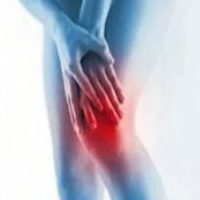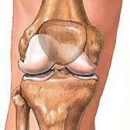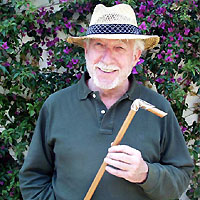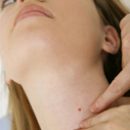The key to the successful treatment of diseases of the musculoskeletal system lies in an integrated approach using all therapeutic factors, new technologies and reserves of the body aimed at restoring the defects of bone and cartilage tissue and to restore joint functions. About new achievements of medicine in the treatment of degenerative-dystrophic diseases of the joints read in the article.
Content
 The pathology of the joints occurs everywhere, especially in highly developed countries. To a large extent, it binds to a change in habitat, negatively affecting human health.
The pathology of the joints occurs everywhere, especially in highly developed countries. To a large extent, it binds to a change in habitat, negatively affecting human health.
Under osteonosis, osteoporosis, osteoarthritis, osteochondropathy of various localizations occurs and the death of the fabric.
In the treatment of degenerative dystrophic diseases of the joints (mainly large), modern methods of conservative and surgical treatment are used, which are basic when providing medical care.
Conservative treatment is carried out at all stages of degenerative-dystrophic diseases of large joints, but does not give the expected results. Currently, there is not a single method that would reliably suspend or eliminated the destructive process in the tissues.
The use of surgical interventions in the rehabilitation orthopedication of surgical interventions (arthroplasty) and embracing (corrective osteotomy) give a temporary effect, and the replacement of non-working (arthrouse) joints internal endoprosthesis is increasingly used.
In connection with the expansion of indications for endoprosthetics, a significant part of surgical interventions with the installation of endoprostheses is carried out with pronounced structural changes in bone tissue — Osteoporosis and other degenerative dystrophic diseases. Also, despite the improvement of the technique of operations and the quality of endoprostheses, a number of difficulties have appeared in patients in the process of functioning of the established endoprosthesis.
Cases of instability and destruction of components, wear as the friction assembly and the most endoprosthesis, infectious complications, periprosthese fractures of the pelvic bones and femur, dislocation of endoprosthesis lead to the need for more complex, time-consuming, long-term and significantly more expensive revision endoprosthetation operations aimed at Elimination of the failure of the insolvency of the primary endoprosthesis.
The lack of encouraging results of conservative treatment methods and unwanted remote consequences of operational interventions cause to look for new methods of treatment and improve existing ones based on the analysis of the results of treatment and on the introduction of innovative solutions of foreign and domestic scientists.
In recent decades, domestic and foreign scientists have expressed a number of provisions forming fundamentally new look in osteology:
- the bone is the only organ that, when damaged, fills its defects with a non-connective gang, but a new bone tissue
- The head of the femur has a great ability to regenerate and plasticity
- In the regeneration of the bone, the proliferation of cell elements, in particular their cambial forms, is inseparable from the formation in the regeneration zones of blood capillaries
- Formulated view by «Ostlyoblastic series», in which cells are located in the sequence «Endothelium of the blood capillary — Perevascular cell — Precepending — Osteoblast — osteocyte»
- With age, the number of stem cells in the human body decreases
- The number of receptors to vitamin D (PBD, VDR) in muscle cell nuclei with age dramatically decreases
- The complexity and rapidness of the mechanism of the proliferation of cartilage, the synovial shell, the synthesis of collagen and the intercellular substance does not allow to achieve the desired effect on the stimulation of these processes by introducing into the joint of parenteral protein components (analogs of cartilage molecules), and cartilage transplants
- The pathological studies of the bone, affected by osteochondropathy, confirmed that the disease is based on the aseptic necrosis and bone marrow
- The pathological process, developing in hip joints, regardless of the initial form of lesion, leads to gross violations of the bone structure. The genesis of this pathological process can be considered as the outcome of the amount of metabolic dissensions, microperlys due to physical exertion, dystrophic cartilage changes in the involvement of bone structure due to ischemia, osteoporosis due to violation of metabolic processes, which allows the generalizing sign of degenerative-dystrophic diseases of the hip joint — Change of bone structure
- The polymorphism of changes in the head of the femur with the leading sign of the change in the structure of bone tissue makes it possible to summarize the group of such seemingly non-uniformly emerging diseases of the hip joint as: deforming arthrosis (coxarthrosis), aseptic necrosis, osteoporosis, as well as changes in the femoral head with a number of systemic diseases
The optimal treatment for degenerative-dystrophic diseases of the joints should be a comprehensive treatment using all therapeutic factors, new technologies and reserves of the body aimed at restoring the defects of bone and cartilage tissue and to restore the functions of the joints.
About Treatment (AGBK) Read in the article The non-Iperative method for the treatment of aseptic necrosis of the femoral head (AngBK)









